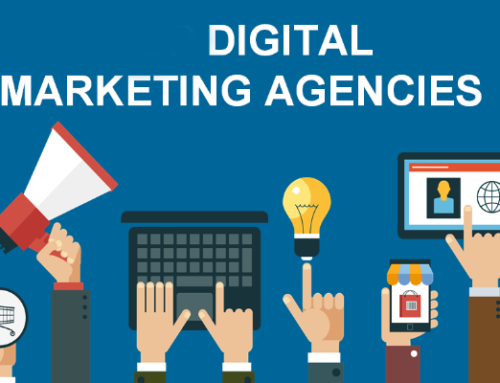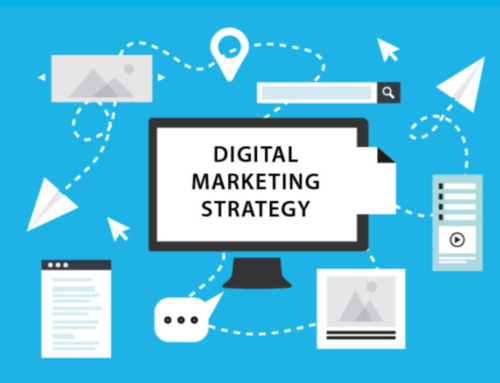How can you successfully create a digital marketing plan for your firm? Your digital marketing plan has to consider SEO, analytics, web positioning, strategies, social media, goals, and metrics.
LIMITED TIME OFFER – GET A FREE 30-MINUTE STRATEGY SESSION
Putting digital marketing actions into motion without a previously-devised plan or strategy could lead to failure for not considering all the aspects that could impact their development. When developing a digital marketing plan, you have to include components such as determining your target audience (buyer persona), business objectives, and an adequate value proposition.
DOWNLOAD THE SURGE DIGITAL ‘5 Ways to Grow Your Business in 90 Days’ EBOOK
WHAT IS A DIGITAL MARKETING PLAN?
A digital marketing plan is a document sharing the details for all the planning for your digital marketing campaigns or actions. It details, among other things:
– Short, medium and long term business goals.
– The strategies to achieve the goals at the digital level.
– The channels to use.
– Action and development plans.
– Investment and budget.
– The timing and roadmap.
According to Philip Kotler, considered one of the fathers of modern marketing, a traditional marketing plan serves: “to document how the organization’s strategic objectives will be achieved through specific marketing strategies and tactics, with the customer as the starting point. It is also linked to the plans of other departments within the organization.”
With this in mind, does your company need a digital marketing plan? According to Puromarketing and in our opinion, the answer is a resounding yes: 100% yes. You need it to:
- Attract, convince, convert, and make your customers fall in love with your product or service.
- Plan all the strategies and actions to reach your target customer.
- Segment your marketing campaigns to provide value at every stage.
Before developing the steps that define a digital marketing plan’s structure, you need to feel comfortable in your corporation’s online domain, your target, the channels where you should be present, and who your competition is and what they do.
Next, we’ll give you a break-down of the step-by-step structure for your digital marketing plan:
STRUCTURE A DIGITAL MARKETING PLAN STEP-BY-STEP
STEP 1: SITUATIONAL ANALYSIS
The first thing you need to do when developing your digital marketing plan is to carry out an internal and external analysis (SWOT analysis) of the firm. A useful framework for this is the SWOT analysis that allows you to look at the strengths, weaknesses, opportunities, and weaknesses for your company and the market at large.
We need to be familiar with the ecosystem we operate in, what our customers’ needs are, and where they get addressed. This analysis is equally qualitative as it is quantitative through looking at factors such as digital habits, intermediaries, influencers, and more.
Implementing benchmarking techniques that aim to identify the best digital practices and success stories and applying them to the business is an increasingly prominent part of the overall corporate strategy.
We also need to conduct an internal study to know what our company’s situation is like in the digital age: is our website customer-oriented? How is the usability and browsing experience? Do we update our blog periodically? What is our website’s current positioning? And what is our social media presence?
STEP 2: ESTABLISH DIGITAL MARKETING GOALS
Once you have your place in the market and your strong points in mind, work on establishing some goals to have a clear idea of where your actions should take you. Everything you plan has to work towards meeting those goals.
You can work on developing this part of your digital marketing plan with the SMART goals framework in mind: specific, measurable, attainable, relevant, and timely goals.
Source: HubSpot
Here’s an example:
- Not a SMART objective: “I want to increase the number of visits to my website.”
- SMART objective: “I want to reach 20,000 visits a month on my website every month within three months. To do so, I’m going to do X, Y, and Z.”
STEP 3: DEFINE THE MARKETING STRATEGY
Once you’ve defined your business objectives, what are you going to do to achieve them? Personalization is becoming increasingly important in digital marketing. Therefore, when it comes to defining your strategy for carrying out your plan, keep these factors in mind:
- Segmenting your target audience:Know who you want to address, what their tastes, needs, or preferences are, where are you looking to meet their expectations, etc. This is the time to create your buyer persona.
- Positioning (USP):To achieve proper positioning, it’s crucial that you are very clear (and reach your audience in the same way) about what your value proposition is and what it entails. In short, it’s why the consumer should choose you and not the competition. You need to know how you’re going to communicate your unique value proposition and how to do so appropriately in the channels where your audience is present (social media, blogs, email marketing, and more).
- Content strategy:This is important for creating, distributing, and managing original content that attracts users and positions the brand as referential in users’ top of mind. Besides, you also have to map out a specific communications plan (content marketing) for every channel. Some of the tools we use to execute this strategy are:
-
- Keyword research: This involves identifying appropriate keywords for us to use correctly in our content to organically improve our SEO positioning. This is imperative for every content strategy if you want users to find you on search engines.
- Content calendar: A content calendar is key for ensuring your strategy makes sense. It provides value; it lets you think long-term and optimize your resources, help create ideas, and more. In a content calendar, you should include the date of publication, author, post topic, keyword, the tags to use/take into consideration, and so on.
- Social posting: Writing an article and not promoting it on social media is a mistake. It’s not spamming but instead planning out what you are going to publish and when on every social media platform with the copies best suited for each one, all while having the ideal number of characters, links, hashtags, and more.
You should also consider:
- What your audience is like.
- What topics you’re going to talk about.
- What tone you’re going to use.
- How frequently you’re going to publish.
STEP 4: DIGITAL STRATEGIES AND TACTICS
Based on our objectives (attraction, conversion, and loyalty), we’ll start to carry out different strategies: email marketing campaigns, social media, CRM, web optimization, SEO strategies, Paid Media advertising, etc.
Today, considering that the number of channels to manage is multiplying and the amount of information we get about our customers is increasing, it’s critical we use Marketing Automation tools that let you automate your marketing campaigns.
Thanks to these tactics, you’ll be able to create workflows that will allow you to create hundreds of campaigns with mere clicks. You’ll be able to personalize messages based on your buyer persona, increasing your chances for success; not only that, you’ll be able to take them, depending on their interactions with the brand, towards the moment of purchase.
Technology has turned into a fundamental tool for implementing digital strategies, making it critical for you to learn to get the most out of it.
STEP 5: MEASURING RESULTS AND KPIS
The work doesn’t stop after you’ve designed and implemented your digital marketing strategy. The next step is one of the most important: analyzing the results. Analytics has turned into a critical pillar for successfully optimizing digital marketing performance and spending.
We have to measure every action using KPIs to figure out if we earned the ROI we expected. Measuring the effectiveness of the strategies and activities we implemented in our digital marketing will help us correct what doesn’t work to achieve the goals we set.
Make sure you have an effective real-time data visualization system. The digital world evolves rapidly, so you need to be on the lookout at all times to identify opportunities and room for improvement in an instant.
Keep these steps in mind when creating your digital marketing plan and don’t leave anything to chance; it’s your greatest enemy if you’re looking to position yourself and boost your presence in the digital space.
Likewise, keep in mind that technology can turn into your greatest ally to create personalized, automated, and ultimately, successfully marketing campaigns. As the task gets complicated, the new tools out there let you simplify your work and boost your performance.
By: PATRICIA PEÑALVER Source: WAM










